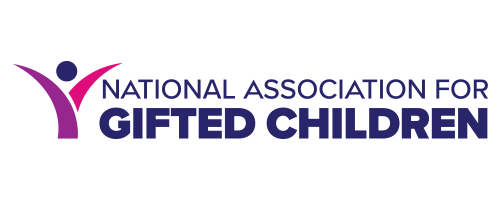William G. Vassar: A Scout, Advocate, and Service Leader in Gifted Education
By Ann Robinson & Sheyanne Smith
In honor of NAGC’s 70th anniversary, we asked Dr. Ann Robinson and Sheyanne Smith to contribute a series of blogs celebrating and remembering NAGC leaders. The third blog in this series looks at the contributions of an early NAGC leader, talent scout, and advocate for gifted education, Bill Vassar.
For a time, William “Bill” Vassar was a baseball scout for the Major League Baseball team, the San Francisco Giants. The job of a scout is to discover and recruit promising new players for the team. Scouts identify players through evaluating skills and potential for success within the organization. If a scout feels strongly that a player should have an opportunity to join the team, they go to the team manager and advocate for the prospect. He may have spent time in the stands of a baseball stadium, but Bill Vassar was a talent scout in more way than one. He campaigned to expand conceptions of giftedness, find students who were overlooked for services, and ensured teachers received appropriate training. Much like his eye for baseball, Vassar saw academic and creative potential in students and wanted opportunities for them to develop their talents. He championed gifted education at the local, state, and federal levels, and he provided service to the field by volunteering his time and expertise to organizations such as the National Association for Gifted Children (NAGC). Vassar used the power of collective advocacy to move the needle in gifted education.
William G. Vassar (1925-2004) began his educational career as a teacher, vice principal, and principal in Springfield, MA. In 1965, he was hired by the Massachusetts State Department of Education as the Senior Supervisor of the Academically Talented. After only one year, he was appointed as the State Director of Programs for the Gifted and Talented at the Connecticut State Department of Education. He was instrumental in the development of mandates and guidance for gifted programs in the state of Connecticut. To accompany state mandates, Vassar coauthored a 15-volume comprehensive plan for gifted students in the state of Connecticut titled “CONN-cept: Connecticut’s Programming for the Gifted and Talented.” According to his contemporaries, Vassar spent time going to superintendents’ offices around the state; he championed gifted programs to anyone who would listen—and to some who would not. He has been described by colleagues as a tenacious advocate for gifted students. He was passionate about ensuring gifted students had opportunities to be challenged. When he started in 1966, only four Connecticut towns provided gifted services to 500 students. Over the next 12 years, that number would expand to 114 programs and more than 5,000 students. Bill Vassar had a clear interest and knack for advocacy.
His fervor for gifted education did not stop at the state level. Vassar became involved with service organizations such as The Association for the Gifted (a Division of Council for Exceptional Children), Council for State Directors of Programs for the Gifted (CSDPG), and NAGC. Organizations such as these run on volunteer leaders providing their time and expertise. Vassar served as vice president and president of the NAGC from 1963-1968 and of the Association for the Gifted from 1969-1971. His volunteer work with NAGC allowed him opportunities to be involved in federal advocacy, as well as to consult with multiple states regarding policy.
His relentless pursuit of opportunities for gifted students did not go unnoticed—he was selected to coordinate a 50-state survey for President Lyndon B. Johnson’s White House Task. Force on Gifted and Talented Education. He worked on this project from 1967-1968, but, according to a summary of milestones in gifted education by James J. Gallagher, the report from the task force was unfortunately never published. This work was not for naught. It was a precursor to the Marland Report, which led to the first federal definition of gifted and talented. Vassar served on a panel assisting Sidney Marland, and he provided a case study of program development in his state as part of the report.
While we may not associate Vassar’s name with federal advocacy, the Marland Report, or classic texts in gifted education, his behind-the-scenes work was influential to the field. His service to gifted education through volunteer leadership roles in organizations, such as NAGC, made an impact on the field. Advocacy comes in many forms, and volunteering for service is critical. Vassar is an example of using the power of grassroots movements with like-minded individuals to affect change. We can take a page from scout Bill Vassar’s playbook and come together as one. Sign up to volunteer for NAGC and be part of the movement.
Sources Consulted
- Andree, B. (1978, Feb. 5). An advocate for the gifted: An interview with William Vassar. The New York Times. https://www.nytimes.com/1978/02/05/archives/connecticut-weekly-interview-an-advocate-for-the-gifted.html
- Gallagher, J. J. (1994). (rep.). Current and historical thinking on education for gifted and talented students (pp. 83–107). Washington, D.C.: U.S. Department of Education.
- “William G. Vassar Obituary”, Hartford Courant; Hartford, CT; December 1, 2004, via legacy.com (https://www.legacy.com/us/obituaries/hartfordcourant/name/william-vassar-obituary?pid=2872298)
Ann Robinson, Ph.D., is the Distinguished Professor and Founding Director of the Jodie Mahony Center for Gifted Education, University of Arkansas at Little Rock. Dr. Robinson is also a past NAGC President, former editor of Gifted Child Quarterly, and the 2023 recipient of the 2023 Ann F. Isaacs Founder’s Award.
Sheyanne S. Smith is the High Ability Learning Specialist for the Nebraska Department of Education. She holds a bachelor’s of English and a Master’s of Arts in Teaching from Belmont University, and a Master’s of Education in Gifted, Talented, and Creative Education from University of Arkansas Little Rock. She is currently a doctoral student at William & Mary, specializing in gifted education administration.


